Note to readers: This post was written in December of 2011. PLEASE do not ask me why I eat ‘this’ or why I don’t eat ‘that’ — as what is shown here does not necessarily reflect what or how I eat today (or more importantly, how you should eat). My diet evolves constantly, due to my constant tweaking and self-experimentation. Over time, I’ll share it here and there, but what I eat is not at all the focus of this blog. I ask that you refrains for pursuing questions about what I eat in the comment section.
Once people start to “get it” with respect to why carbohydrate reduction, or all-out restriction, leads to good things, the inevitable question I’m asked is, “So….what exactly do you eat?” I’m always a bit hesitant to get into this. It’s sort of like asking a pilot, “So…how do you fly this plane?” It’s a great question, but probably the wrong first question.
For many people it’s so overwhelming to contrast what they currently eat – probably a typical American diet of 500-600 daily grams of carbohydrates (200 grams of which are sugar) – with a diet of less than 50 daily grams of carbohydrate, which is what I consume. Remember, what I’m showing you here is what I have been eating for about the last 7 months. For the first 20 months of my nutritional transformation, I was gradually reducing carbohydrate intake from about 600 daily grams to 300 daily grams to 150 daily grams.
It’s really important to understand that carbohydrate reduction is a continuum. There is no “right” amount of carbohydrate to eat. Let me illustrate this with the following “2 by 2” matrix, below (sorry, once a consultant, always a consultant). When asking the question, “How much should I reduce my intake of carbohydrates?” it’s a good idea to start with two broader questions:
- What is my inherent level of insulin resistance?
- What are my goals?
There are technical ways to quantify the answer to the first question, which I will detail in future posts. However, the simple version of determining your inherent amount of insulin resistance is checking how many criteria of metabolic syndrome are present. In other words, are you overweight? Is your waist large? Is your blood pressure high? Do you have elevated blood glucose or triglycerides (these are determined from a standard blood test)? Do you have low HDL cholesterol? For the purpose of this question, even responding “yes” to one of these questions means you are predisposed to being insulin resistant. I was a “yes” to 3 of these questions.
Consider this matrix, and let’s use me as an example.
- How predisposed am I to insulin resistance? One look at a picture of me in my non-lean state, coupled with an understanding of my family history, and it’s clear I didn’t hit the genetic lottery with respect to insulin resistance. Hence, I am towards the right of graph.
- What am I optimizing for? Some folks want to lose 15 pounds. Others want to have fewer swings in daily energy level, or stop taking their blood pressure medicine. In my case, I want to maximize as many variables as possible: I want to be as lean as I can; I want to cure my insulin resistance; I want to be sure I never have a single symptom of metabolic syndrome; I want to do everything I can to avoid cancer and Alzheimer’s disease; I want to be metabolically flexible. Hence, I am towards the top of the graph.
As you can see, based on my poor genes and lofty goals, I find myself in the upper right square, which means I need to adopt the greatest amount of carbohydrate restriction. My wife, in contrast, has good genes, coupled with high goals, placing her in the upper left box. As a result of this combination, she does not need to restrict carbs as much as I do. If her goals were even more modest, she could get away with very little reduction in carbohydrates – probably just reducing sugar without much reduction in starch.
Below is a picture of a few of the foods you’ll typically find in my refrigerator. Note that on average I consume about 4,000 to 4,500 calories per day. I get this from approximately 400-425 grams of fat, 120-140 grams of protein, and 30-50 grams of carbs. In addition, there are a number of supplements I consume daily, which I describe in the table below. In future blog posts I will go into greater detail as to why I consume each of these supplements, but for now I’ll give a very quick explanation.
Finally, note that under no circumstance do I ever count calories (for the sake of limiting them). When I was first transitioning into ketosis I did need to count how much carbohydrate and protein I was consuming – anything over about 50 grams of carbs and 150 grams of protein makes it difficult to generate sufficient ketones – but I do not ever count calories for the sake of restricting them. I eat when I’m hungry. I don’t eat when I’m not hungry.
Regular supplements I consume every day
*I will be writing a great deal about the role of omega-6 and omega-3 fatty acids in our diet in subsequent posts. However, if you want a quick (albeit high-level and not overly nuanced) overview of the topic, take a look at what Dr. Andrew Weil and Livestrong have to say about it.
One last point on supplements – I do not take a multivitamin at this time, but I am looking into it a bit more closely. My concern is that 1) they may not be necessary when you remove glucose from your diet (I’ll write about why in the future), and 2) they may actually do direct harm, as a result of contaminants.
Ok, at long last, here is a list of what I ate over the past 5 days (excluding water, still and sparkling, which I consume about a gallon of each day)
Wednesday
Breakfast: “Fat shake” (In a blender: 8 oz heavy whipping cream, 8 oz sugar-free almond milk; 25 gm sugar-free hydrolyzed whey protein, 2-3 frozen strawberries)
Lunch: About 4 or 5 oz of assorted cheese (Gouda, Swiss, Manchego), 2 or 3 oz olives, about 4 oz of particularly fat salami and pepperoni
Late afternoon: About 2 oz of mixed nuts (almonds, walnuts, peanuts), large latte (latte made with heavy fat cream instead of milk) at Peet’s
Dinner: Garden salad with olive oil (lots of extra oil) and balsamic vinegar dressing, about 6 oz grilled salmon with a lot of butter and lemon juice
Thursday
Breakfast: Scrambled eggs (6 yolks, 3 whites**, with added heavy fat cream) cooked in coconut oil, 3 or 4 sausage patties (be sure to look for brands not cured in sugar).
Coffee with homemade whip cream (heavy fat cream hand whipped)
Lunch: Half chicken (thigh, breast, wings) with lots of skin; about 2 oz of Gouda and aged-cheddar
Dinner: Wedge blue cheese salad with bacon; 12 oz prime rib with lots of butter; 5 or 6 pieces of asparagus coated in butter
Coffee with half and half cream, 2 cups (the restaurant did not have heavy cream, so I had to settle for half-and-half)
**The reason I typically minimize egg whites, at least when making my own eggs, is to ensure I keep protein intake under about 125 grams per day. Ketosis is pretty easy to attain if one is eating, say, 2500 calories per day. However, given my caloric demands – and the requirement that I keep protein intake limited – I really need to go out of my way to ensure I’m not eating too much protein. I will be writing about this in much greater detail in a future post.
Friday
Breakfast: Whole fat latte at Starbucks (made same as above), scrambled eggs (about 4 eggs), bacon (high fat pieces), slice of Swiss and slice of cheddar (since I was eating in the airport, the scrambled eggs were made “normally,” not with the additional fat I use when making my own)
Lunch: About 4 oz of especially fat salami and pepperoni, about 2 oz Parmesan cheese
Dinner: Ground beef sautéed with heavy cream, onions, broccoli, and melted cheese
2 large cups of decaf coffee with homemade whip cream (heavy cream whipped with a touch of xylitol)
Saturday
Breakfast: Scrambled eggs (6 yolks, 3 whites, with added heavy fat cream) cooked in coconut oil, 3 or 4 pieces of especially fat bacon (not cured in sugar), about 3 oz of cream cheese
2 cups of coffee with heavy cream
Lunch: Tomatoes with basil and mozzarella and balsamic vinegar and olive oil, about 2 oz raspberries with homemade whip cream
Dinner: Leftover ground beef sautéed from previous night, salad with homemade cream dressing (whole fat Greek yogurt, olive oil, basil, blue cheese, garlic)
1 cup of decaf coffee with homemade whip cream
Sunday
Breakfast: Omelet (6 yolks, 3 whites, coconut milk, sautéed onions) cooked in coconut oil, 4 or 5 pieces of the fattest bacon I can find
2 cups of coffee with heavy cream
Lunch: Plate of assorted cheeses (aged Gouda, Swiss loaf, aged Parmesan – about 3 oz), about 2 oz salami, about 1 oz olives
Dinner: Cream of mushroom bacon soup (heavy cream, chicken broth, shredded Parmesan cheese, mushrooms, chopped bacon, garlic, butter, chopped papers, various spices), leg of lamb (baked in sauce made of red wine, balsamic vinegar, diced tomatoes, garlic, and a lot of spices)
2 cups decaf coffee with homemade whip cream (as above)
So there you have it — 5 days in the eating life of Peter Attia. This may look a bit strange, relative to what you may be eating now, but remember, I’m at the far end of the spectrum – i.e., nutritional ketosis. You may just be starting your own journey of reducing carbohydrates, but I hope this gives you an idea of what I eat. In particular, what probably stands out is:
- I go to great lengths to avoid sugar which, unfortunately, shows up in virtually every highly processed food.
- I eat zero starch (e.g., bread, cereal, rice, crackers, pasta).
- I consume only modest amounts of fruit (one serving per day, at most, and only in the form of berries, which contain the least amount of fructose).
- I eat vegetables, but primarily because they are a great way to get more fat (e.g., high-fat salad dressings, butter), not because I “need” them.
- I go out of my way to eat as much fat as possible, especially monounsaturated and saturated fat (the only fat I avoid is omega-6 polyunsaturated fat).
- I have a few “go to” meals that I eat several times per week. I do this because I really like them and it’s quick and easy make them. Yours need not be the same!
Photo by Glen Carrie on Unsplash

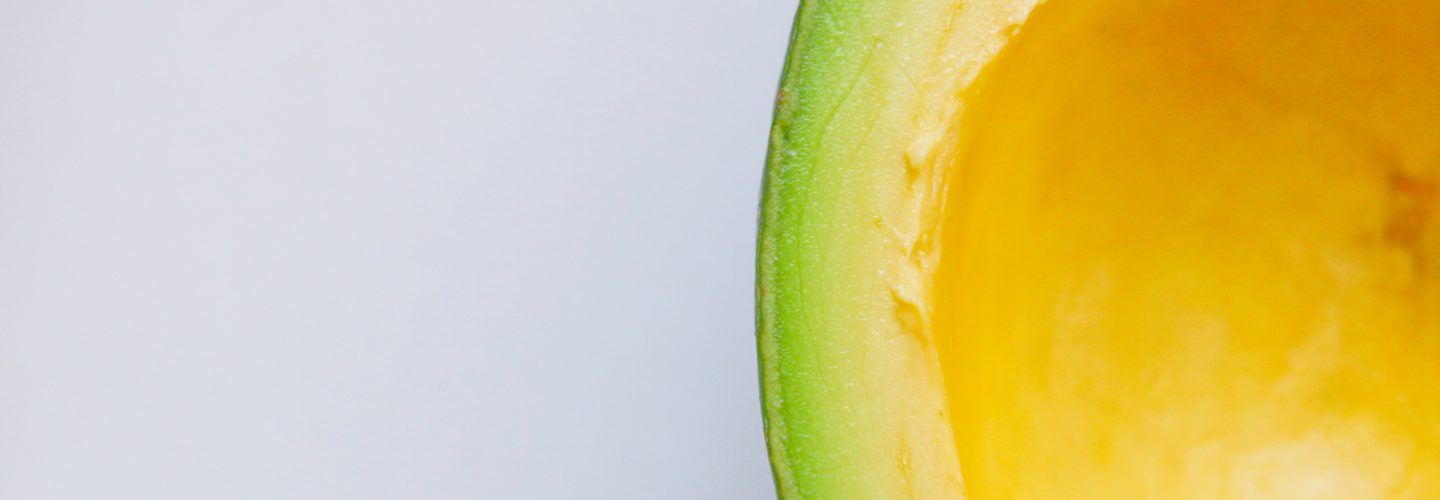
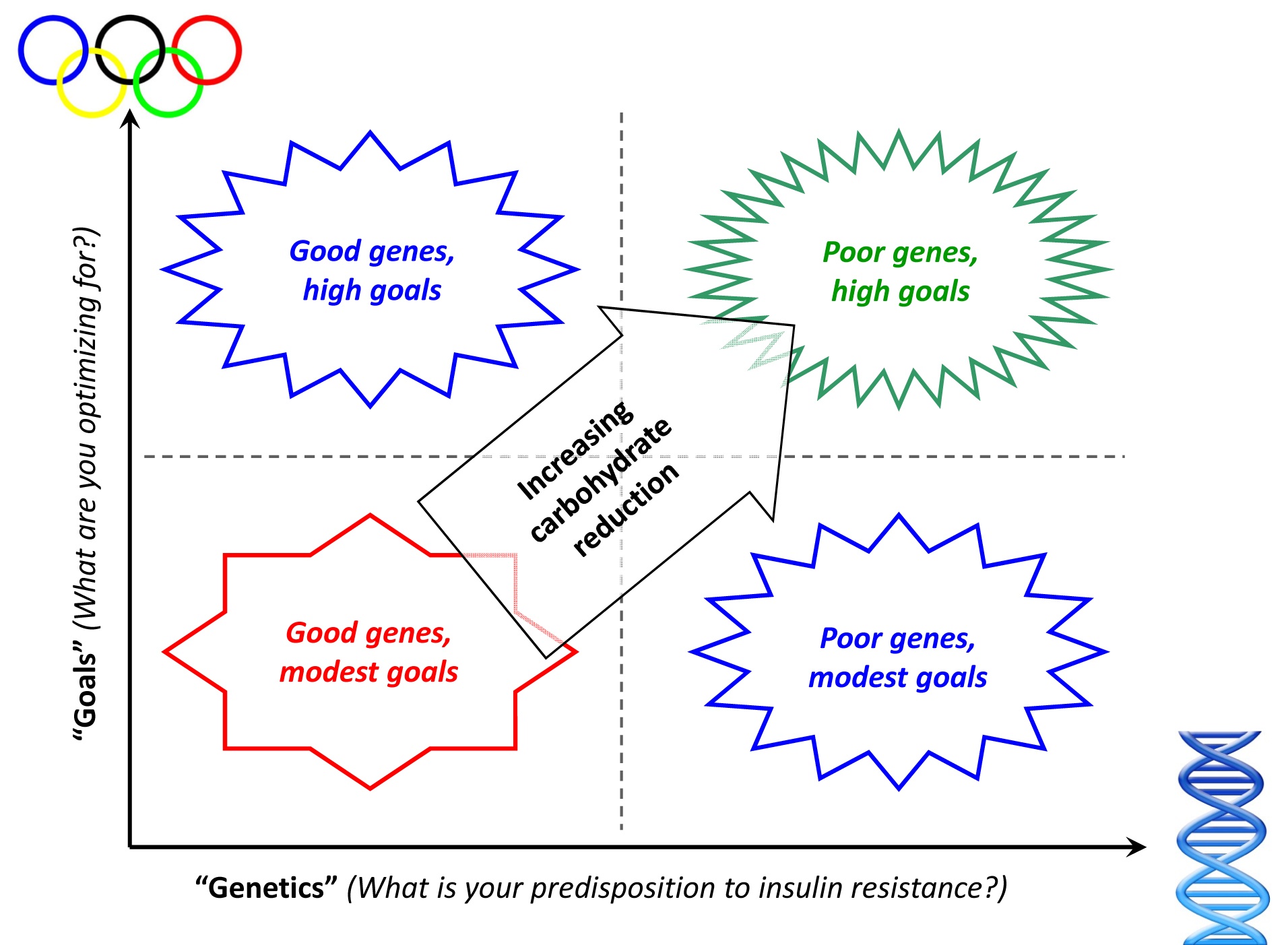

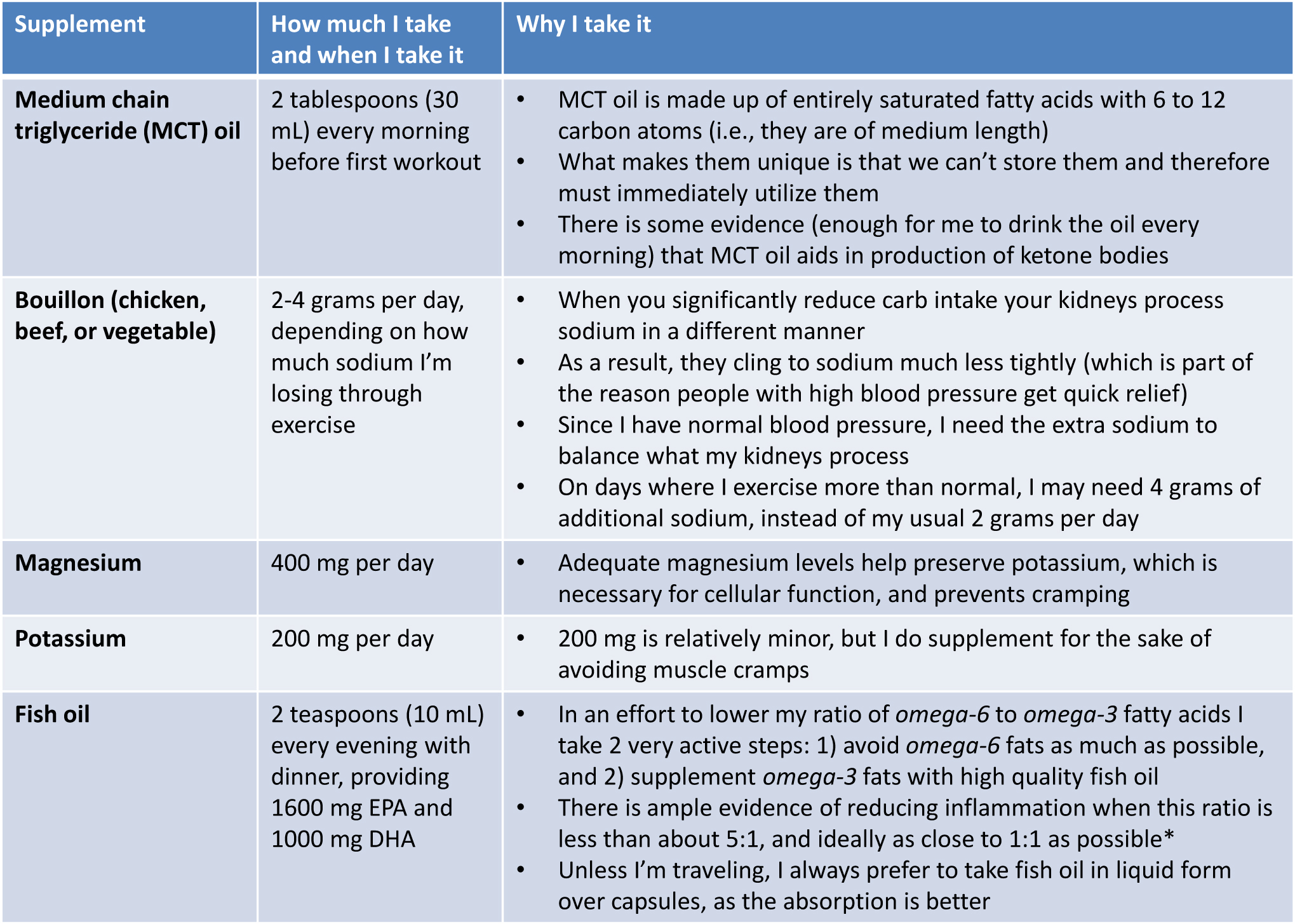

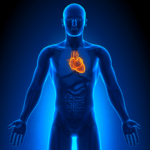
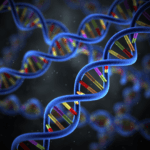
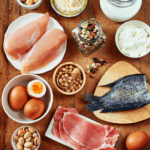
High Blood Pressure
In your supplementation recommendations, a couple of times you have recommended levels of sodium supplementation “if you have normal blood pressure”. And if you have high blood pressure, what is the recommendation? Is nutritional ketosis contraindicated for those with high blood pressure?
On the contrary! In fact, virtually every person I have personally worked with who had high BP and was taking medication for it, had to stop the medication within a month. I only make this point to say that folks with normal BP tend to be more sensitive to a drop in BP.
Hi Peter,
Thank you for this excellent site and also all the time you are devoting to answering questions! (Have you thought about a forum?)
I was led here after reading Taubes book, and to say the least I am absolutely blown away. I have been a long time believer in reducing processed starches and sugars out of my diet, but the idea about increased sodium and fats are new to me. I have never been able to go extremely low carb and am wondering if this is why. Also, the kicker about Taubes book that enthralled me is that I am sedentary, but I don’t want to be! Somewhere in there he said that once fuel is used differently by our body, then energy levels should increase. I want to be active and have energy, especially to run around with my husband and kids. (I am 36, muscular build, but would like to lose about 40-50 pounds).
(I also was drawn to the book because my husband has recently been diagnosed with metabolic syndrome and diabetes and currently taking metformin….he is the “fit but fat” guy, runs, lifts, carries concrete around our house, and hits a tractor tire with a sledge, lol, his doc is of the “exercise more, eat less camp, which is also frustrating. I have huge influence on him since I do the majority of the cooking.)
Anyway, my main questions are… (I have a ton, but will continue to read all of your posts and comments before I ask more, plus I now have Good Calories, Bad Calories to read)…
1. how bad am I “messing up” if I restrict my carbs pretty low during the week, but then not as much on the weekends…(particularly with beer and/or a couple slices of pizza)? The reason I ask is that you mentioned somewhere that going in and out of ketosis may not be a good idea metabolically, but maybe I am not really going ketonic if I have a “free night” every week anyway?
2. If having a free night isn’t a bad idea, should I be concentrating still on increasing fat and sodium during the week that I am low carb?
3. If I do increase fat and sodium, and reduce protein, what will my body tell me when or if I eat too much fat and sodium?
I really hope these questions make sense and if it is easier to point me to a book or a previous post to answer them, please do! 🙂
Thank you!
Some smoking is better than no smoking, from a physiologic perspective. However, for some people (like me), it’s psychologically easier to stop smoking altogether. These are personal questions and there is no “right” answer. You’ve got to figure out what works for you. As far as sodium goes, it’s only really an issue when you’re carb intake is very low.
Peter, curious if you have you ever consumed chia seeds for the Omega-3? Those things are absolute nuclear bombs of Omega 3, and have about a 3:1 ratio of Omega 3:Omega 6 (more 3 than 6). Tricky part is how to eat it, but I find a tablespoon makes a good addition to Fage yogurt.
They are high in ALA, but it’s not clear they convert efficiently to the guys we *really* care about: EPA, DHA. I don’t think anything comes close to marine sources of omega-3. I’ll write about this down the line…
Wow, totally on fire with all of this, but I am confused on “don’t count calories” part…I am 5’2″, about 120lbs, want to be 110, fit and lean. Have been following insulin resitant low carb plan for 6 weeks now..feel awesome (have fibroyalgia which has been much improved)lost some weight and feel completely satisfied with my menu plans, which is mostly whole foods/veggies/protien. My question is How do you consume so much, including high fats, and maintain weight control? I am eating a lot, feeling full and have never gone over 1300cal per day, or over 38% carbs! I feel like I should have lost more by now, according to your science, so am I doing something wrong? 🙂 Teri
You are doing nothing wrong! Keep up the good work. Weight is but one narrow component of human health and performance. Think of the long game, not the 2 month game.
Terri,
I also have fibro, and was wondering about your initial approach to going low carb. Did you starting count carbs right away or just eliminate categories? Did you go straight for Ketosis or back your way in as Peter did?
How long did it take you to start feeling bette? (I’m your height and not only is my current weight way above yours my-it-would-be-nice-if-I-got-there-weight is well above your current weight.) I just really want to get to that place where I can say I’m feeling awesome.
Peter, can I ask why you prefer Xylitol as your sweetener. From the studies I’ve seen, sucralose seems to have a lesser impact on insulin and glucose than Xylitol. In a 1989 study – Xylitol vs. glucose: effect on the rate of gastric emptying and motilin, insulin and GIP release, Xylitol increased fasting insulin levels three to four-fold. Granted, it’s far less than sucrose, but I would think that you would want to minimize any effect on insulin. Thanks.
I prefer the taste and I’ve documented that it has no (or minimal at most) impact on my ability to generate ketones. These properties vary by person.
Out of curiosity: why do you still eat any carbs (plant foods) at all? Wouldn’t it be easier (psychologically not having to limit yourself to a tiny portion and not having to measure carbs) to just stick to fat and meat a la Steffanson/Inuit? Thank you.
I’d give them all up if I could, but it does become a practical challenge to be at near zero. Remember, I don’t eat carbs in the sense you’re thinking. Virtually all of my carbs are from cheese, a few veggies, nuts, eggs — but I consume these things to get the fat they offer.
Peter,
I have began researching uncured sugar free bacon. Many of the products I have come across say that they are “uncured/sugar free”; however, I am seeing cane sugar or brown sugar listed in the ingredients. Do you recommend/prefer any particular brands?
I just look for ones that have, at most, 1 gram of dextrose per serving. They’re out there.
Peter,
I promise I’m not stalking. It’s just that I feel like it is the first day of college: EXCITING! I feel like I have FINALLY found a nutritional path. Maybe I was ripe for it because I have been reading and researching so much on nutrition (and I will continue to do so)! Anywho, I LOVE YOUR “menus”. YUMMMMMMOOOOOO! Cant wait to try them–especially the cream dressing. I had given up “cream” dressings entirely (can you say misery?) And finally, my husband is listening! He can’t wait to incorporate this new lifestyle into our lives. Oh yeah, how interesting to see on my local news that studies have come out advocating against PROCESSED foods…ya think? 🙂 I look forward to continuing to learn with you!
Congratulations. You’re about to change your life for the better, I’d bet.
Thank you, so much, for responding. Your passion for helping people “re-think”/”re-learn” what we thought we knew about nutrition and eating is totally apparent.
I have searched this blog for the answer to my question (as I do NOT want you to repeat yourself), and have not been unable to find the answer. Are protein grams measured after the meat is cooked?
Good question. I’m not sure. I would guess they report protein content in the format the food is most typically consumed, but I don’t actually know.
Hi Rosalyn
I have wondered about this, too. If/when you find the answer, would appreciate your posting it.
I can only eat small amounts of meat on occasion and try to avoid it. Other than eggs, what other options do you suggest? Tofu is not an option.
Thank you
Look at what I eat.
I looked at what you eat, there is a lot of meat, hence my question.
Non-meat foods make up 80% of caloric intake. Are you saying you can’t eat dairy also? It should not be difficult to get more than enough calories from non-meat sources. If you don’t eat dairy or eggs, it does get tough, though. In this case, at the very least, getting rid of sugar and highly-refined carbs is still a huge win and gets you probably 50% of the benefit.
I eat eggs, dairy, some seafood but I can barely stomach meat anymore. I guess I am confused because I watched a video where you talk about asking the waiter for all the fat off the meat. I was envisioning having to gobble up huge amounts of animal fat.
I am reading more of your posts and learning it is more than the Atkins eat-all-the-meat that you can plan.
Correct. In fact, when I first tried to get into ketosis (very unsuccessfully, I might add), I was heavily punished by the amount of meat I consumed. My protein levels were 225-250 gm/day. Way too much to make ketones (since amino acids stimulate insulin production, also). So I’ve had to reduce protein intake by about 50%, much of which has come in the form of reduced meat intake. Because of my large caloric demand — but the need to fix carbs below 50 gm/day and protein below about 125 gm/day — I go out of my way to eat fat. I almost never (except for fish) consume “lean” meats. For me, that’s a “waste” of protein. So when I eat meat, I’m really going out of my way to get as much fat as possible along for the ride. I could easily do what I do if I decided to give up meat, provided I could still eat dairy and eggs (and ideally fish, too).
Thank you Peter. That is reassuring. I do have a questions about your fat shake. I made one this morning (minus the whey protein – I didn’t have any), and within 15 minutes I had a tiny little headache which then progressed into a pounding headache and nausea less than an hour later, I had to leave work. Is an increase of fats a possibility in this case?
Hmmmm. Not likely from the fat. Probably any number of other things (dehydration, for example).
Creamy salad dressing is awesome. Thanks!
Hi Peter,
You are doing a great job with the blog, keep it up. I just had a question, normally body breaks down carbs to smaller units (glucose) and uses the glucose as an energy source to fuel the brain and the rest of the body. In the absence of carbs, (and presence of fat) the liver breaks down the fat to release ketones.
My question is, how reliable are ketones as a source of energy, especially to the brain? I see that one of the goals that made you follow a Ketogenic diet was “improved mental acuity”. Can you elaborate on that, please?
I am a student so I hope you can see my concern.
Also, if this diet is to be used as a weight loss method. Shouldn’t the amount of fat intake be less (but definitely more than carbs) so as to avert the body to use more of the stored fat?
Thanks 🙂
B-OHB is actually a better metabolic substrate for the brain because it’s derived from fat which, even in the most lean individual, is near infinite relative to glycogen. When your brain is glucose-dependent (like it is for most people), it is very sensitive to the roller coaster of glucose levels in the bloodstream, especially when one (as most do) consumes foods that spike insulin levels and cause the body to really work hard to maintain euglycemia.
Peter,
I saw in the things you eat a picture of coconut oil. Isn’t this a good source of medium chain fatty acids? Why do you take a supplement for it instead of using the oil? Have you tried the unsweetened coconut milk form Trader Joe’s? I use it instead of almond milk and it has less carbs and more fat. I am thinking of using coconut oil and coconut milk to make ice cream. Have you tried either for this purpose? Also what do you consider an adequate protein level for a non-exercising male who should be around 80 kilograms. Is one gram per kilogram enough?
Thanks
Yes, coconut and palm oil are about 60% MCT (also contain longer than 12-14 carbons, too, which is why they are solid at room temp). I will have to look into your suggestion of unsweetened coconut milk. I cook a lot with coconut milk, but it’s really thick, so I’m guessing what you’re using it different.
How about coconut flakes? A healthy fat?
Great blog!
Question: I am a power/oly lifter and martial artist (brazilian jiu jitsu and muay thai). While I have kept carbs low for sometime now, I had also kept protein up to 1 gram per pound of lean body mass which in my case is something like 210 grams per day. I am 6’4″ 260 lbs and about 20% BF.
Carbs are easily under 50 per day. But the ketostix say negligible/trace or negative every day.
Standard advice to lifters like myself has always been a gram of protein per pound of LBM. Are you saying that this directly conflicts with my ability to achieve ketosis?
I am concerned with preservation of LBM but really would like to get leaner (12%)
Thanks!
Your protein intake is too high to allow your body to make ketones. If you feel fine and you are happy with your performance, why change anything? However, if you want to do a ketosis-self-experimient, you will need to reduce protein to roughly 150 gm/day (and I’d recommend in that case getting carbs down to about 30 gm/day). I suspect you may have to give up a touch of lean tissue, but you will get leaner. One way to find out: Do a 12-week test with a DEXA on both sides.
Thank you for the response.
I am most concerned about getting leaner and yes, doing a self experiment with ketosis. I also believe that leaner will help my endurance and stamina, ie. carrying less ‘useless’ weight.
I’m already under 30 grams of carbs per day.
Is there a “formula” for protein/day? ie X per lb of LBM?
I’m happy to follow your advice and thoroughly enjoy self experimentation as it appears you do as well!
Thanks again
Not when it comes to ketosis. The formula is something like this: “effective” carb consumption is about = total carbs + 25% of protein above 100 gm. So 40 gm of carb and 160 gm of protein is about 55 gm of “effective” carb. Goal is keep “effective” carb below about 50.
what do you know, you were absolutely right 🙂
i cut protein to 150 grams per day, upped the fat and now the stix are purple.
total LBS are coming down and bf% is as well – thank you!
I did also get the DEXA scan which i think was wildly off in its calculations. I did some more research online and found that there are a lot concerns with its accuracy. heck, I didnt even fit completely in the machine scan area – top of head and bottom of my feet were cut off!
Not to be argumentative, but would that same theory apply to a woman who weighs 115 lbs?
It seems to, roughly. The implication is that for folks like me (and perhaps you), who eat more total calories you need a higher % to come from fat.
does that strike you as being a difficult logical proposition to digest? or am I just brainwashed?
Brainwashed. Just like I was.
I beg your pardon, but I just need to have this restated for me one more time so I can begin to digest it:
Irrespective of bodyweight, sex or body composition, we convert protein consumed in excess of 150 grams to something that is “effectively” a carbohydrate that limits ketosis.
Is that right?
Is this a test, or are you really asking me again? 🙂
Thanks for dealing with my obtuseness! I’ve got a DEXA scan set for tomorrow and I’m capping protein at 150 from now on. Will do an experiment and see what happens.
and PS i’ve been thwarted by three different places who have DEXA scanners – saying I need a referral and a diagnosis first. Even if I self pay! What a strange world we live in where a person can’t pay market rate for a diagnostic exam.
Talk to a local university that may use one for research purposes.
Hi Peter – thanks for all your hard work; makes great reading. I read Gary Taubes last year and decided to try the approach pre holiday in France with v fast weight loss; started 11st11 then by 10 days was 11st5. Then I went to France and ate a lot of bread. Tried slim world religiously in Jan to convince myself the “traditional” slimming method wouldn’t work for me and it didn’t, so started with low/zero carb last week, but loss is much slower and fluctuates; is that normal? Was the first time just such a body-shock to the system that this time it will just be a bit slower? Am sure am doing everything right – have even given up my morning cuppa tea, which for an English woman is pretty much treason.. Thanks Lin
Yes, this is a typical response, though the exact reason is not clear. Moral of the story: don’t go back and forth.
Hi,
Do you have a preferred brand/source of the liquid fish oil you mention? I find the quality & provenance of the various mass-produced omega-3 capsules somewhat hard to gauge–and many of the ‘premium’ offerings I’ve found at Whole Foods etc. are shockingly expensive.
Carlons.
Hi Peter,
You and Dr. Dayspring use this brand, so I switched from my softgels of another brand. I think there must be a good reason that you both use this. My husband asked me what the difference is, but I am not sure…is it better absorbed because it is liquid? Less chance of impurity? I just got my bottle of Carlsons and the dose is 1600 mg per teaspoon of Omega 3s (rather than 1000 per capsule). Our doctor has us on 2000 twice per day; is there a simple way to measure this? I think I remember reading that overdoing omega 3 is potentially harmful. Also, the label says to take with food; is that necessary? Thank you, maryann
Not sure of question context. A teaspoon is 5 mL if that helps.
I’m sorry…